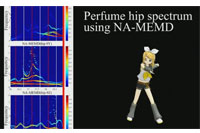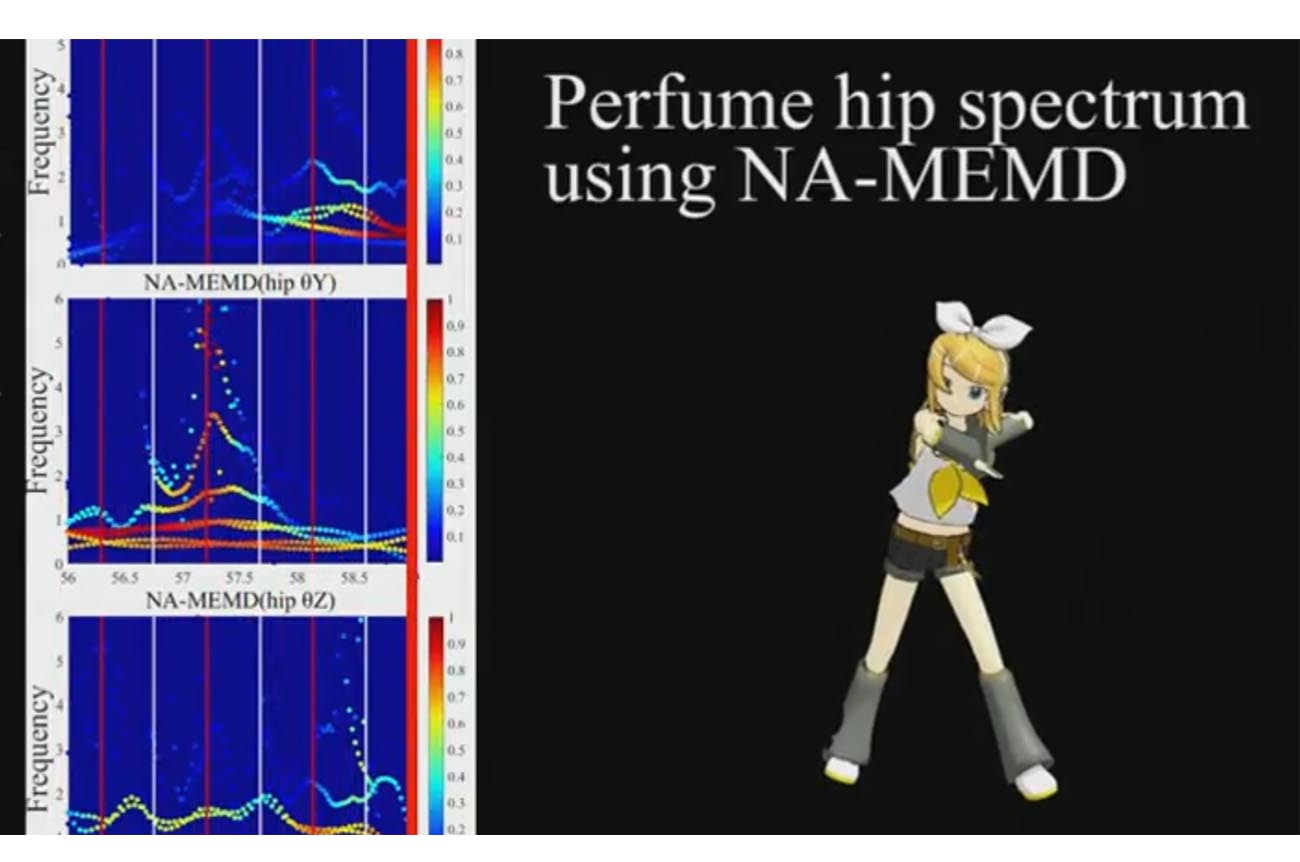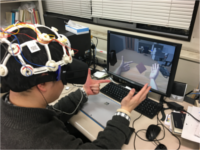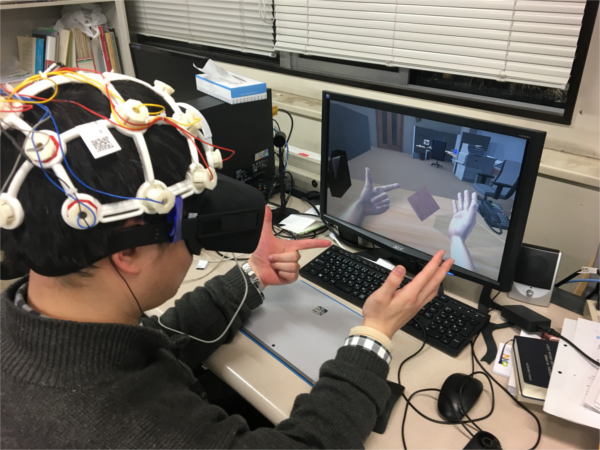Research
Introduction of the main researches conducting in CAVELab.
Dance Motion Analysis


In the present research, we propose a new framework to analyze and extract some new features from a famous Japanese threesome pop singer group called "Perfume", and compare it with Waltz and Salsa dance. Using the Hilbert-Huang transform (HHT), their dance motions can be decomposed into motion (choreographic) primitives or IMFs. Therefore we can scale, combine, subtract, exchange, and modify those IMFs, and can blend them into new dance motions self-consistently. Our analysis and framework can lead to a motion editing and blending method to create a new dance motion from different dance motions.
Visualization of Vortex

Properties of ordinary differential equation's solution, chaoticity for example, can be examined by solving the solution's manifold, which is also the topology of the surface in 3-dimension space. For example, the aurora is stimulated by the injection of massive energy coming from the reconnection between the magnetospheres of earth and the sun. These phenomenons can be caught as the change of topology, that's why the visualization of the vector field topology is vital. The figure shows the visualized topology of the reconnection of the tail of earth's magnetosphere, which causes the production of aurora. The visualization of 3-d topology is not easy because it is strongly determined by the topology of the attaching curves between magnetic vector field's seperation surfaces, as showed in the figure. That's because the magnetic lines besides the seperation surfaces and the attaching curves are topologically equivalent which are not worthy visualizing. These surfaces and curves conbine into a complicated topology following the topology rules. The reconnection of magnetic lines encourages the change of topology, and finally makes up a magnetic hall. The methods of demonstrating multiple curves and their crossing are necessary in the visualization.
Synesthesia

Synethesia is a perceptual phenomenon in which stimulation of one sensory leads to another, like feeling the shape of flavor or seeing the color of music. In several sorts of synethesias, the type of seeing the color of sounds, called chromesthesia, is relatively popular. People with chromesthesia are able to see colors by hearing the pronunciation of words and charactors or the scales and keys of music. Crossmodality, which means the interactions between different sensory modalities, is recently gathering attension in the design of humanoid robots and media contents because of its deep relationship to creativity. Due to the link of crossmadality and synethesia, we believe that we can use it to understand or create art facts. In this research, the questionaires and the chromesthesia tests are practiced at the same time, and we analyze these two data to prove the synethesia. On our testing website, a cluster analysis called Ward's method is used to seperate colors for the mapping of tunes and colors. By comparing this correspondence and the Disney's Fantasia Chapter 1, we can see most colors used in the scene are comforming to our pridiction from mapping the music. Hereafter, we are planning to recruit more synethetes, research their modalities, collect more fMRI measured data, and examine the model of the mechanism which induces the cellbellum's synchronous activities functionally and anatomically.
Body Transfer Illusion


The sense of self-ownership is an integration of information (i.e. visual, tactile, somatosensory etc.) processing in human brains. The Virtual Reality (VR) technology can replicate an environment to help people achieving the integrated information.
Recently, numerous researches have been performed on human body illusions. It is widely known that visual and tactile stimulations can change the human body ownership cognitions, which called Illusory Ownership (IO) or Body Transfer Illusion (BTI).
The Brain Computer Interface (BCI) device is possible to operate computer or machines by mental command. We think using BCI is possible to project "self" unconsciously in cyberspace with the evocation of IO, making it possible to create a new maneuvering interface for huge, or micro-robot, and drone controlling.
Light Simulation and Rendering

This is the researche based on the nonstandard finite difference time domain (FDTD) algorithm.
The nonstandard FDTD algorithm is much more accurate than conventional FDTD (Yee) algorithm by optimizing to monochromatic waves in electromagnetic computation.
We introduce the nonstandard FDTD theory and learning examples in Click here.
